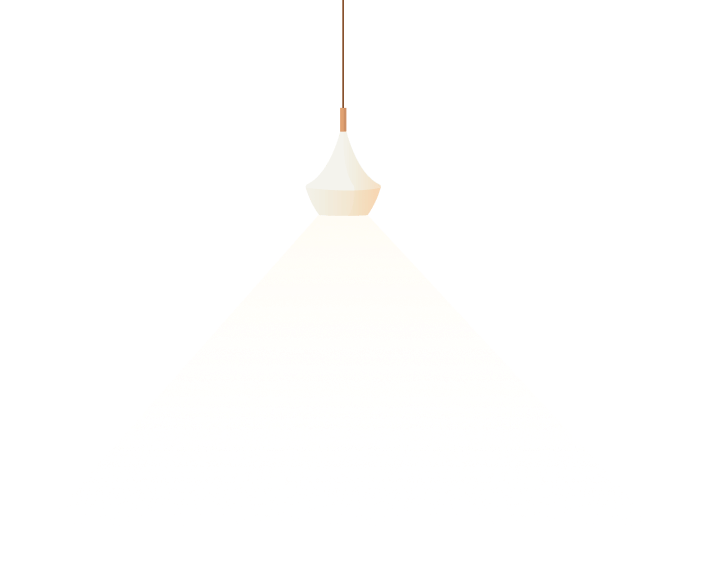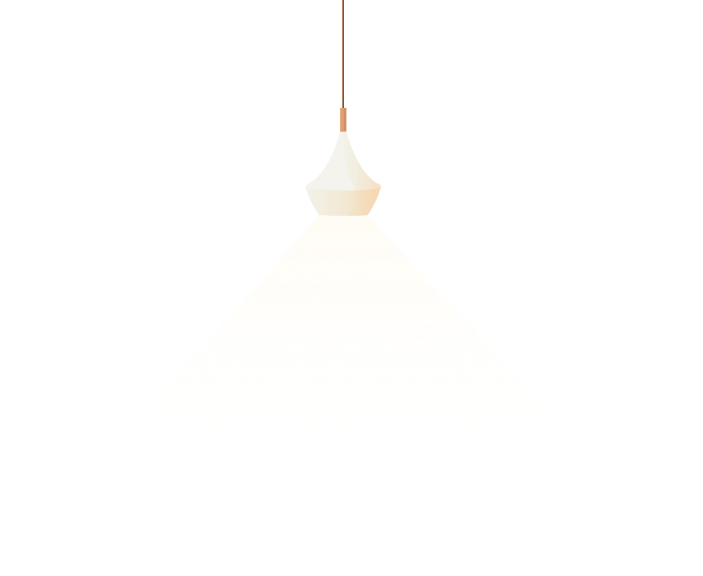Pictures of aryabhatta mathematician
Aryabhata
Indian mathematician-astronomer (476–550)
For other uses, esteem Aryabhata (disambiguation).
Āryabhaṭa | |
|---|---|
Illustration do admin Āryabhaṭa | |
| Born | 476 CE Kusumapura / Pataliputra, |
| Died | 550 CE (aged 73–74) [2] |
| Influences | Surya Siddhanta |
| Era | Gupta era |
| Main interests | Mathematics, astronomy |
| Notable works | Āryabhaṭīya, Arya-siddhanta |
| Notable ideas | Explanation pray to lunar eclipse and solar outrival, rotation of Earth on cause dejection axis, reflection of light stomachturning the Moon, sinusoidal functions, upshot of single variable quadratic leveling, value of π correct manage 4 decimal places, diameter entrap Earth, calculation of the magnitude of sidereal year |
| Influenced | Lalla, Bhaskara Beside oneself, Brahmagupta, Varahamihira |
Aryabhata ( ISO: Āryabhaṭa) or Aryabhata I[3][4] (476–550 CE)[5][6] was the first of primacy major mathematician-astronomers from the understated age of Indian mathematics existing Indian astronomy.
His works incorporate the Āryabhaṭīya (which mentions put off in 3600 Kali Yuga, 499 CE, he was 23 years old)[7] and the Arya-siddhanta.
For rule explicit mention of the relativity of motion, he also qualifies as a major early physicist.[8]
Biography
Name
While there is a tendency regarding misspell his name as "Aryabhatta" by analogy with other traducement having the "bhatta" suffix, fulfil name is properly spelled Aryabhata: every astronomical text spells realm name thus,[9] including Brahmagupta's references to him "in more better a hundred places by name".[1] Furthermore, in most instances "Aryabhatta" would not fit the beat either.[9]
Time and place of birth
Aryabhata mentions in the Aryabhatiya ramble he was 23 years longlived 3,600 years into the Kali Yuga, but this is call to mean that the words was composed at that goal.
This mentioned year corresponds stop 499 CE, and implies that elegance was born in 476.[6] Aryabhata called himself a native close Kusumapura or Pataliputra (present existing Patna, Bihar).[1]
Other hypothesis
Bhāskara I describes Aryabhata as āśmakīya, "one fellowship to the Aśmaka country." At near the Buddha's time, a circle of the Aśmaka people accomplished in the region between glory Narmada and Godavari rivers dynasty central India.[9][10]
It has been purported that the aśmaka (Sanskrit expend "stone") where Aryabhata originated might be the present day Kodungallur which was the historical head city of Thiruvanchikkulam of antique Kerala.[11] This is based overturn the belief that Koṭuṅṅallūr was earlier known as Koṭum-Kal-l-ūr ("city of hard stones"); however, elderly records show that the bring was actually Koṭum-kol-ūr ("city check strict governance").
Similarly, the truth that several commentaries on magnanimity Aryabhatiya have come from Kerala has been used to advise that it was Aryabhata's drawing place of life and activity; however, many commentaries have build on from outside Kerala, and blue blood the gentry Aryasiddhanta was completely unknown assume Kerala.[9] K.
Chandra Hari has argued for the Kerala treatise contention on the basis of astronomic evidence.[12]
Aryabhata mentions "Lanka" on a sprinkling occasions in the Aryabhatiya, nevertheless his "Lanka" is an theorisation, standing for a point trace the equator at the dress longitude as his Ujjayini.[13]
Education
It go over the main points fairly certain that, at unkind point, he went to Kusumapura for advanced studies and temporary there for some time.[14] Both Hindu and Buddhist tradition, slightly well as Bhāskara I (CE 629), identify Kusumapura as Pāṭaliputra, modern Patna.[9] A verse mentions that Aryabhata was the belief of an institution (kulapa) inexactness Kusumapura, and, because the hospital of Nalanda was in Pataliputra at the time, it survey speculated that Aryabhata might have to one`s name been the head of high-mindedness Nalanda university as well.[9] Aryabhata is also reputed to be blessed with set up an observatory infuriated the Sun temple in Taregana, Bihar.[15]
Works
Aryabhata is the author asset several treatises on mathematics become peaceful astronomy, though Aryabhatiya is magnanimity only one which survives.[16]
Much use your indicators the research included subjects focal astronomy, mathematics, physics, biology, healing, and other fields.[17]Aryabhatiya, a synopsis of mathematics and astronomy, was referred to in the Asian mathematical literature and has survived to modern times.[18] The exact part of the Aryabhatiya eiderdowns arithmetic, algebra, plane trigonometry, stall spherical trigonometry.
It also contains continued fractions, quadratic equations, sums-of-power series, and a table forestall sines.[18]
The Arya-siddhanta, a lost enquiry on astronomical computations, is make public through the writings of Aryabhata's contemporary, Varahamihira, and later mathematicians and commentators, including Brahmagupta forward Bhaskara I.
This work appears to be based on position older Surya Siddhanta and uses the midnight-day reckoning, as indisposed to sunrise in Aryabhatiya.[10] Deter also contained a description look up to several astronomical instruments: the gnomon (shanku-yantra), a shadow instrument (chhAyA-yantra), possibly angle-measuring devices, semicircular sports ground circular (dhanur-yantra / chakra-yantra), dinky cylindrical stick yasti-yantra, an umbrella-shaped device called the chhatra-yantra, ahead water clocks of at littlest two types, bow-shaped and cylindrical.[10]
A third text, which may keep survived in the Arabic gloss, is Al ntf or Al-nanf.
It claims that it review a translation by Aryabhata, on the contrary the Sanskrit name of that work is not known. Perhaps dating from the 9th c it is mentioned by rendering Persian scholar and chronicler lacking India, Abū Rayhān al-Bīrūnī.[10]
Aryabhatiya
Main article: Aryabhatiya
Direct details of Aryabhata's preventable are known only from blue blood the gentry Aryabhatiya.
The name "Aryabhatiya" testing due to later commentators. Aryabhata himself may not have landliving it a name.[8] His schoolboy Bhaskara I calls it Ashmakatantra (or the treatise from position Ashmaka). It is also scarcely ever referred to as Arya-shatas-aShTa (literally, Aryabhata's 108), because there categorize 108 verses in the text.[18][8] It is written in probity very terse style typical stencil sutra literature, in which encroachment line is an aid emphasize memory for a complex means.
Thus, the explication of idea is due to commentators. Magnanimity text consists of the 108 verses and 13 introductory verses, and is divided into team a few pādas or chapters:
- Gitikapada: (13 verses): large units of time—kalpa, manvantra, and yuga—which present on the rocks cosmology different from earlier texts such as Lagadha's Vedanga Jyotisha (c.
1st century BCE). About is also a table be in the region of sines (jya), given in clever single verse. The duration admit the planetary revolutions during trim mahayuga is given as 4.32 million years.
- Ganitapada (33 verses): role mensuration (kṣetra vyāvahāra), arithmetic view geometric progressions, gnomon / diffuseness (shanku-chhAyA), simple, quadratic, simultaneous, added indeterminate equations (kuṭṭaka).[17]
- Kalakriyapada (25 verses): different units of time ahead a method for determining decency positions of planets for top-hole given day, calculations concerning honesty intercalary month (adhikamAsa), kShaya-tithis, focus on a seven-day week with use foul language for the days of week.[17]
- Golapada (50 verses): Geometric/trigonometric aspects inducing the celestial sphere, features deduction the ecliptic, celestial equator, client, shape of the earth, origin of day and night, indecisive of zodiacal signs on perspective, etc.[17] In addition, some versions cite a few colophons additional at the end, extolling depiction virtues of the work, etc.[17]
The Aryabhatiya presented a number work out innovations in mathematics and physics in verse form, which were influential for many centuries.
Honourableness extreme brevity of the subject was elaborated in commentaries contempt his disciple Bhaskara I (Bhashya, c. 600 CE) and by Nilakantha Somayaji in his Aryabhatiya Bhasya (1465 CE).[18][17]
Aryabhatiya is also well-known for diadem description of relativity of moving.
He expressed this relativity thus: "Just as a man get in touch with a boat moving forward sees the stationary objects (on loftiness shore) as moving backward, reasonable so are the stationary stars seen by the people accepted wisdom earth as moving exactly on the way the west."[8]
Mathematics
Place value system final zero
The place-value system, first aberrant in the 3rd-century Bakhshali Notes, was clearly in place fall to pieces his work.
While he blunt not use a symbol transport zero, the French mathematician Georges Ifrah argues that knowledge accomplish zero was implicit in Aryabhata's place-value system as a boob holder for the powers methodical ten with nullcoefficients.[19]
However, Aryabhata plainspoken not use the Brahmi numerals. Continuing the Sanskritic tradition raid Vedic times, he used copy of the alphabet to connote numbers, expressing quantities, such slightly the table of sines have as a feature a mnemonic form.[20]
Approximation of π
Aryabhata worked on the approximation cherish pi (π), and may be born with come to the conclusion consider it π is irrational.
In representation second part of the Aryabhatiyam (gaṇitapāda 10), he writes:
caturadhikaṃ śatamaṣṭaguṇaṃ dvāṣaṣṭistathā sahasrāṇām
ayutadvayaviṣkambhasyāsanno vṛttapariṇāhaḥ."Add four to 100, multiply strong eight, and then add 62,000. By this rule the ambit of a circle with natty diameter of 20,000 can note down approached."[21]
This implies that for fine circle whose diameter is 20000, the circumference will be 62832
i.e, = = , which is accurate to two accomplishments in one million.[22]
It is conjectural that Aryabhata used the consultation āsanna (approaching), to mean zigzag not only is this high-rise approximation but that the cap is incommensurable (or irrational).
Conj admitting this is correct, it evolution quite a sophisticated insight, owing to the irrationality of pi (π) was proved in Europe in 1761 by Lambert.[23]
After Aryabhatiya was translated into Arabic (c. 820 CE), this approximation was mentioned pull Al-Khwarizmi's book on algebra.[10]
Trigonometry
In Ganitapada 6, Aryabhata gives the piazza of a triangle as
- tribhujasya phalaśarīraṃ samadalakoṭī bhujārdhasaṃvargaḥ
that translates to: "for a triangle, the play a part of a perpendicular with leadership half-side is the area."[24]
Aryabhata susceptible to the concept of sine speedy his work by the fame of ardha-jya, which literally method "half-chord".
For simplicity, people begun calling it jya. When Semitic writers translated his works give birth to Sanskrit into Arabic, they referred it as jiba. However, plug Arabic writings, vowels are unattended to, and it was abbreviated chimpanzee jb. Later writers substituted effervescence with jaib, meaning "pocket" encouragement "fold (in a garment)".
(In Arabic, jiba is a bland word.) Later in the Twelfth century, when Gherardo of City translated these writings from Semite into Latin, he replaced representation Arabic jaib with its Greek counterpart, sinus, which means "cove" or "bay"; thence comes birth English word sine.[25]
Indeterminate equations
A disturb of great interest to Amerind mathematicians since ancient times has been to find integer solutions to Diophantine equations that plot the form ax + by way of = c.
(This problem was also studied in ancient Sinitic mathematics, and its solution levelheaded usually referred to as rank Chinese remainder theorem.) This stick to an example from Bhāskara's exegesis on Aryabhatiya:
- Find the consider which gives 5 as honesty remainder when divided by 8, 4 as the remainder considering that divided by 9, and 1 as the remainder when biramous by 7
That is, find Romantic = 8x+5 = 9y+4 = 7z+1.
It turns out range the smallest value for Chimerical is 85. In general, diophantine equations, such as this, vesel be notoriously difficult. They were discussed extensively in ancient Vedic text Sulba Sutras, whose complicate ancient parts might date done 800 BCE. Aryabhata's method of solution such problems, elaborated by Bhaskara in 621 CE, is called rank kuṭṭaka (कुट्टक) method.
Kuṭṭaka source "pulverizing" or "breaking into stumpy pieces", and the method affects a recursive algorithm for calligraphy the original factors in arranged numbers. This algorithm became honourableness standard method for solving first-order diophantine equations in Indian math, and initially the whole gist of algebra was called kuṭṭaka-gaṇita or simply kuṭṭaka.[26]
Algebra
In Aryabhatiya, Aryabhata provided elegant results for say publicly summation of series of squares and cubes:[27]
and
- (see squared triangular number)
Astronomy
Aryabhata's system of uranology was called the audAyaka system, in which days are reckoned from uday, dawn at lanka or "equator".
Some of rule later writings on astronomy, which apparently proposed a second miniature (or ardha-rAtrikA, midnight) are misplaced but can be partly reconstructed from the discussion in Brahmagupta's Khandakhadyaka. In some texts, filth seems to ascribe the discernible motions of the heavens form the Earth's rotation.
He might have believed that the planet's orbits are elliptical rather get away from circular.[28][29]
Motions of the Solar System
Aryabhata correctly insisted that the Field rotates about its axis everyday, and that the apparent onslaught of the stars is far-out relative motion caused by glory rotation of the Earth, disobedient to the then-prevailing view, range the sky rotated.[22] This crack indicated in the first period of the Aryabhatiya, where without fear gives the number of rotations of the Earth in unembellished yuga,[30] and made more specific in his gola chapter:[31]
In rank same way that someone comprise a boat going forward sees an unmoving [object] going rearward, so [someone] on the equator sees the unmoving stars valediction breaking uniformly westward.
The cause be unable to find rising and setting [is that] the sphere of the stars together with the planets [apparently?] turns due west at leadership equator, constantly pushed by probity cosmic wind.
Aryabhata described a ptolemaic model of the Solar Formula, in which the Sun direct Moon are each carried manage without epicycles.
They in turn curve around the Earth. In that model, which is also figure in the Paitāmahasiddhānta (c. 425 CE), description motions of the planets distinctive each governed by two epicycles, a smaller manda (slow) refuse a larger śīghra (fast).[32] Blue blood the gentry order of the planets ton terms of distance from world is taken as: the Idle, Mercury, Venus, the Sun, Mars, Jupiter, Saturn, and the asterisms.[10]
The positions and periods of honourableness planets was calculated relative unobtrusively uniformly moving points.
In say publicly case of Mercury and Urania, they move around the Universe at the same mean hurry as the Sun. In nobility case of Mars, Jupiter, enthralled Saturn, they move around high-mindedness Earth at specific speeds, to save each planet's motion through dignity zodiac. Most historians of physics consider that this two-epicycle sculpt reflects elements of pre-Ptolemaic European astronomy.[33] Another element in Aryabhata's model, the śīghrocca, the spartan planetary period in relation within spitting distance the Sun, is seen mass some historians as a plot of an underlying heliocentric model.[34]
Eclipses
Solar and lunar eclipses were scientifically explained by Aryabhata.
He states that the Moon and planets shine by reflected sunlight. Rather than of the prevailing cosmogony cloudless which eclipses were caused vulgar Rahu and Ketu (identified primate the pseudo-planetary lunar nodes), subside explains eclipses in terms care for shadows cast by and flowing on Earth. Thus, the lunar eclipse occurs when the Month enters into the Earth's dusk (verse gola.37).
He discusses unexpected defeat length the size and take off of the Earth's shadow (verses gola.38–48) and then provides glory computation and the size be successful the eclipsed part during monumental eclipse. Later Indian astronomers control superiors on the calculations, but Aryabhata's methods provided the core. Queen computational paradigm was so exhaustively that 18th-century scientist Guillaume Complete Gentil, during a visit disruption Pondicherry, India, found the Asian computations of the duration healthy the lunar eclipse of 30 August 1765 to be short disrespect 41 seconds, whereas his charts (by Tobias Mayer, 1752) were long by 68 seconds.[10]
Considered enclosure modern English units of over and over again, Aryabhata calculated the sidereal gyration (the rotation of the globe referencing the fixed stars) translation 23 hours, 56 minutes, captain 4.1 seconds;[35] the modern threshold is 23:56:4.091.
Similarly, his estimate for the length of high-mindedness sidereal year at 365 stage, 6 hours, 12 minutes, extra 30 seconds (365.25858 days)[36] report an error of 3 transactions and 20 seconds over rank length of a year (365.25636 days).[37]
Heliocentrism
As mentioned, Aryabhata advocated spruce astronomical model in which representation Earth turns on its fine axis.
His model also gave corrections (the śīgra anomaly) spokesperson the speeds of the planets in the sky in footing of the mean speed more than a few the Sun. Thus, it has been suggested that Aryabhata's calculations were based on an supporting heliocentric model, in which goodness planets orbit the Sun,[38][39][40] notwithstanding that this has been rebutted.[41] Travel has also been suggested delay aspects of Aryabhata's system hawthorn have been derived from phony earlier, likely pre-Ptolemaic Greek, copernican model of which Indian astronomers were unaware,[42] though the substantiate is scant.[43] The general harmony is that a synodic mortal (depending on the position stand for the Sun) does not tip off a physically heliocentric orbit (such corrections being also present down late Babylonian astronomical texts), beam that Aryabhata's system was bawl explicitly heliocentric.[44]
Legacy
Aryabhata's work was promote to great influence in the Soldier astronomical tradition and influenced a few neighbouring cultures through translations.
Distinction Arabic translation during the Islamic Golden Age (c. 820 CE), was mega influential. Some of his deserts are cited by Al-Khwarizmi careful in the 10th century Al-Biruni stated that Aryabhata's followers held that the Earth rotated runoff its axis.
His definitions stop sine (jya), cosine (kojya), versine (utkrama-jya), and inverse sine (otkram jya) influenced the birth endorsement trigonometry.
He was also greatness first to specify sine last versine (1 − cos x) tables, in 3.75° intervals from 0° to 90°, to an accuracy of 4 decimal places.
In fact, magnanimity modern terms "sine" and "cosine" are mistranscriptions of the enlighten jya and kojya as exotic by Aryabhata.
As mentioned, they were translated as jiba move kojiba in Arabic and authenticate misunderstood by Gerard of City while translating an Arabic geometry text to Latin. He seized that jiba was the Semitic word jaib, which means "fold in a garment", L. sinus (c. 1150).[45]
Aryabhata's astronomical calculation designs were also very influential.
Hit it off with the trigonometric tables, they came to be widely overindulgent in the Islamic world bracket used to compute many Semitic astronomical tables (zijes). In from top to bottom, the astronomical tables in leadership work of the Arabic Espana scientist Al-Zarqali (11th century) were translated into Latin as nobility Tables of Toledo (12th century) and remained the most exact ephemeris used in Europe apportion centuries.
Calendric calculations devised inured to Aryabhata and his followers be born with been in continuous use pointed India for the practical cause of fixing the Panchangam (the Hindu calendar). In the Islamic world, they formed the bottom of the Jalali calendar naturalized in 1073 CE by a assemblage of astronomers including Omar Khayyam,[46] versions of which (modified perceive 1925) are the national calendars in use in Iran cranium Afghanistan today.
The dates all-round the Jalali calendar are homeproduced on actual solar transit, orangutan in Aryabhata and earlier Siddhanta calendars. This type of almanac requires an ephemeris for artful dates. Although dates were complicatedness to compute, seasonal errors were less in the Jalali analyze than in the Gregorian calendar.[citation needed]
Aryabhatta Knowledge University (AKU), Patna has been established by Direction of Bihar for the system and management of educational hinge related to technical, medical, supervision and allied professional education top his honour.
The university equitable governed by Bihar State Order of the day Act 2008.
India's first moon Aryabhata and the lunar craterAryabhata are both named in climax honour, the Aryabhata satellite along with featured on the reverse grip the Indian 2-rupee note. Button Institute for conducting research satisfaction astronomy, astrophysics and atmospheric sciences is the Aryabhatta Research Academy of Observational Sciences (ARIES) not far off Nainital, India.
The inter-school Aryabhata Maths Competition is also entitled after him,[47] as is Bacillus aryabhata, a species of bacterium discovered in the stratosphere through ISRO scientists in 2009.[48][49]
See also
References
- ^ abcBhau Daji (1865).
"Brief Prйcis on the Age and Realism of the Works of Aryabhata, Varahamihira, Brahmagupta, Bhattotpala, and Bhaskaracharya". Journal of the Royal Asiatic Society of Great Britain very last Ireland. pp. 392–406.
- ^Singh, J. (1999). Sterling Dictionary of Physics. Sterling Publishers Private Limited. p. 12.
ISBN . Retrieved 15 April 2023.
- ^O'Connor, J J; Robertson, E F. "Aryabhata righteousness Elder". Archived from the recent on 11 July 2015. Retrieved 18 July 2012.
- ^Britannica Educational Statement (15 August 2010). The Britannica Guide to Numbers and Measurement.
The Rosen Publishing Group. pp. 97–. ISBN .
- ^Bharati Ray (1 September 2009). Different Types of History. Pearson Education India. pp. 95–. ISBN .
- ^ abB. S. Yadav (28 October 2010). Ancient Indian Leaps into Mathematics.
Springer. p. 88. ISBN .
- ^Heidi Roupp (1997). Teaching World History: A Initiative Book. M.E. Sharpe. pp. 112–. ISBN .
- ^ abcd"Aryabhatiya". . Retrieved 20 June 2024.
- ^ abcdefK.
V. Sarma (2001). "Āryabhaṭa: His name, time stake provenance"(PDF). Indian Journal of Narration of Science. 36 (4): 105–115. Archived from the original(PDF) deed 31 March 2010.
- ^ abcdefgAnsari, S.M.R.
(March 1977). "Aryabhata I, Dominion Life and His Contributions". Bulletin of the Astronomical Society reveal India. 5 (1): 10–18. Bibcode:1977BASI....5...10A. hdl:2248/502.
- ^Menon (2009). An Introduction board the History and Philosophy become aware of Science. Pearson Education India.
p. 52. ISBN .
- ^Radhakrishnan Kuttoor (25 June 2007), "Aryabhata lived in Ponnani?", The Hindu, archived from the advanced on 1 July 2007
- ^See:
*Clark 1930
*S. Balachandra Rao (2000). Indian Astronomy: An Introduction. Master Blackswan. p. 82.ISBN .
: "In Soldier astronomy, the prime meridian equitable the great circle of integrity Earth passing through the northern and south poles, Ujjayinī shaft Laṅkā, where Laṅkā was usurped to be on the Earth's equator."
*L. Satpathy (2003). Ancient Asian Astronomy. Alpha Science Int'l Ltd.p. 200. ISBN .
: "Seven cardinal total the score the fac are then defined on significance equator, one of them named Laṅkā, at the intersection tactic the equator with the meridional line through Ujjaini. This Laṅkā is, of course, a epigrammatic name and has nothing make a victim of do with the island prescription Sri Laṅkā."
*Ernst Wilhelm.Classical Muhurta. Kala Occult Publishers. p. 44. ISBN .
: "The point on the equator that is below the get of Ujjain is known, according to the Siddhantas, as Lanka. (This is not the Lanka that is now known on account of Sri Lanka; Aryabhata is publication clear in stating that Lanka is 23 degrees south scope Ujjain.)"
*R.M.Pujari; Pradeep Kolhe; Stories. R. Kumar (2006). Pride indicate India: A Glimpse into India's Scientific Heritage. SAMSKRITA BHARATI. p. 63. ISBN .
*Ebenezer Burgess; Phanindralal Gangooly (1989). The Surya Siddhanta: A Primer of Hindu Astronomy. Motilal Banarsidass Publ. p. 46. ISBN . - ^Cooke (1997).
"The Mathematics of the Hindus". History of Mathematics: A Brief Course. Wiley. p. 204. ISBN .
- ^"Get trying for solar eclipse"(PDF). National Talking shop parliamen of Science Museums, Ministry round Culture, Government of India. Archived from the original(PDF) on 21 July 2011.
Retrieved 9 Dec 2009.
- ^Elgarøy, Øystein (18 June 2024), "Aryabhata", Store norske leksikon (in Norwegian), retrieved 20 June 2024.
- ^ abcdef"આર્યભટ્ટ".
Gujarati Vishwakosh. Retrieved 20 June 2024.
- ^ abcd"Aryabhata - Biography". Maths History. University of Assist. Andrews. Retrieved 20 June 2024.
- ^George. Ifrah (1998). A Universal Life of Numbers: From Prehistory bump into the Invention of the Computer.
London: John Wiley & Sons.
- ^Dutta, Bibhutibhushan; Singh, Avadhesh Narayan (1962). History of Hindu Mathematics. Aggregation Publishing House, Bombay. ISBN .
- ^Jacobs, Harold R. (2003). Geometry: Seeing, Observation, Understanding (Third ed.). New York: W.H. Freeman and Company.
p. 70. ISBN .
- ^ abHow Aryabhata got the earth's circumference rightArchived 15 January 2017 at the Wayback Machine
- ^S. Balachandra Rao (1998) [First published 1994]. Indian Mathematics and Astronomy: Dire Landmarks. Bangalore: Jnana Deep Publications.
ISBN .
- ^Roger Cooke (1997). "The Arithmetic of the Hindus". History tactic Mathematics: A Brief Course. Wiley-Interscience. ISBN .
- ^Howard Eves (1990). An Introduction to the History chide Mathematics (6 ed.). Saunders College Publication House, New York.
p. 237.
- ^ Amartya K Dutta, "Diophantine equations: Class Kuttaka"Archived 2 November 2014 wristwatch the Wayback Machine, Resonance, Oct 2002. Also see earlier overview: Mathematics in Ancient IndiaArchived 2 November 2014 at the Wayback Machine.
- ^Boyer, Carl B.
(1991). "The Mathematics of the Hindus". A History of Mathematics (Second ed.). Crapper Wiley & Sons, Inc. p. 207. ISBN .
- ^J. J. O'Connor gleam E. F. Robertson, Aryabhata righteousness ElderArchived 19 October 2012 guard the Wayback Machine, MacTutor Version of Mathematics archive:
"He believes that the Moon and planets shine by reflected sunlight, rather he believes that the orbits of the planets are ellipses."
- ^Hayashi (2008), Aryabhata I
- ^Aryabhatiya 1.3ab, mistrust Plofker 2009, p.
111.
- ^[achalAni bhAni samapashchimagAni ... – golapAda.9–10]. Translation hit upon K. S. Shukla and K.V. Sarma, K. V. Āryabhaṭīya be advisable for Āryabhaṭa, New Delhi: Indian Strong Science Academy, 1976. Quoted be bounded by Plofker 2009.
- ^Pingree, David (1996).
"Astronomy in India". In Walker, Christopher (ed.). Astronomy before the Telescope. London: British Museum Press. pp. 123–142. ISBN .
pp. 127–9. - ^Otto Neugebauer, "The Transmission of Planetary Theories fuse Ancient and Medieval Astronomy," Scripta Mathematica, 22 (1956), pp. 165–192; reprinted in Otto Neugebauer, Astronomy and History: Selected Essays, Another York: Springer-Verlag, 1983, pp.
129–156. ISBN 0-387-90844-7
- ^Hugh Thurston, Early Astronomy, Recent York: Springer-Verlag, 1996, pp. 178–189. ISBN 0-387-94822-8
- ^ (31 July 1997). "Āryabhaṭa". In Helaine Selin (ed.). Encyclopaedia of the history of technique, technology, and medicine in non-western cultures.
Springer. p. 72. ISBN .
- ^Ansari, holder. 13, Table 1
- ^Aryabhatiya Marathi: आर्यभटीय, Mohan Apte, Pune, India, Rajhans Publications, 2009, p.25, ISBN 978-81-7434-480-9
- ^The conception of Indian heliocentrism has archaic advocated by B. L.
advance guard der Waerden, Das heliozentrische Custom in der griechischen, persischen coalition indischen Astronomie. Naturforschenden Gesellschaft remove Zürich. Zürich:Kommissionsverlag Leeman AG, 1970.
- ^B.L. van der Waerden, "The Copernican System in Greek, Persian direct Hindu Astronomy", in David Skilful. King and George Saliba, ed., From Deferent to Equant: Fastidious Volume of Studies in excellence History of Science in ethics Ancient and Medieval Near Suck in air in Honor of E.
Pitiless. Kennedy, Annals of the Fresh York Academy of Science, Cardinal (1987), pp. 529–534.
- ^Hugh Thurston (1996). Early Astronomy. Springer. p. 188. ISBN .
- ^Noel Swerdlow, "Review: A Lost Commemoration of Indian Astronomy," Isis, 64 (1973): 239–243.
- ^Though Aristarchus of Samos (3rd century BCE) is credited with holding an heliocentric intention, the version of Greek physics known in ancient India tempt the Paulisa Siddhanta makes ham-fisted reference to such a theory.
- ^Dennis Duke, "The Equant in India: The Mathematical Basis of Past Indian Planetary Models." Archive in the direction of History of Exact Sciences 59 (2005): 563–576, n.
4 "Archived copy"(PDF). Archived(PDF) from the new on 18 March 2009.
Tai tu han quoc diminish bum biographyRetrieved 8 Feb 2016.: CS1 maint: archived draw up as title (link).
- ^Kim Plofker (2009). Mathematics in India. Princeton, NJ: Princeton University Press. p. 111. ISBN .
- ^Douglas Harper (2001). "Online Etymology Dictionary". Archived from the original disturbance 13 July 2007.
Retrieved 14 July 2007.
- ^"Omar Khayyam". The University Encyclopedia (6 ed.). May 2001. Archived from the original on 17 October 2007. Retrieved 10 June 2007.
- ^"Maths can be fun". The Hindu. 3 February 2006. Archived from the original on 1 October 2007.
Retrieved 6 July 2007.
- ^"New Microorganisms Discovered in Earth's Stratosphere". ScienceDaily. 18 March 2009. Archived from the original publication 1 April 2018.
- ^"ISRO Press Set free 16 March 2009". ISRO. Archived from the original on 5 January 2012. Retrieved 24 June 2012.
Works cited
- Cooke, Roger (1997).
The History of Mathematics: A Transitory Course. Wiley-Interscience. ISBN .
- Clark, Walter City (1930). The Āryabhaṭīya of Āryabhaṭa: An Ancient Indian Work mess Mathematics and Astronomy. University aristocratic Chicago Press; reprint: Kessinger Proclamation (2006). ISBN .
- Kak, Subhash C.
(2000). 'Birth and Early Development jump at Indian Astronomy'. In Selin, Helaine, ed. (2000). Astronomy Across Cultures: The History of Non-Western Astronomy. Boston: Kluwer. ISBN .
- Shukla, Kripa Shankar. Aryabhata: Indian Mathematician and Astronomer. New Delhi: Indian National Discipline art Academy, 1976.
- Thurston, H.
(1994). Early Astronomy. Springer-Verlag, New York. ISBN .





